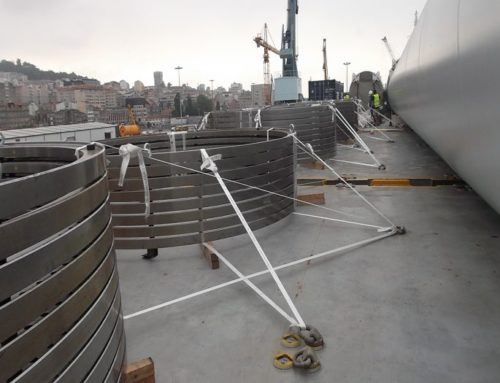You will need
Getting Started
Feed the strap around the bundle and fold the strap with the loose end away from you. Take a buckle in your left hand with the prongs pointing to the right.
Feed the loop of the strap through the buckle’s center and around the upper prong. Fold the other end of the strap towards you and feed it via the buckle’s center around the bottom prong. Pull the strap hand tight.
Place the CAB tensioner on the bottom strap from the right side, about 30 cm away from the buckle. Pushing the handle will release the gripper foot. Place the bottom strap underneath the gripper foot and feed the top strap trough the knife assembly and winger. Tension the strap by moving the handle up and down.
Push the handle of the tensioner to cut the strap and move the tool away to the right side.
When To Use Cordstrap CAB Tensioner?
Unitising products can be a challenge because you don’t always have a flat surface to place your tensioning tool on. For this application we have developed our CAB-Tensioner. CAB stands for “Cut Away Base”. Cordstrap’s CAB tensioner only has a small surface underneath the gripper foot, which means you only need a very small surface to position your tool on. The CAB tool is often used in the timber industry on small timber bundles, as shown in the video.
With this tool you can quickly and easily bundle and unitise products and equipment with an optimum tension. Cordstrap is the perfect alternative for steel strapping as it is both stronger and safer than steel.
For small round bundles, such as steel pipes, Cordstrap has designed a Round Bundle Tensioner. The challenge with small round bundles is that they often lack any surface to position a tensioning tool on. This particular tensioner is specifically designed for such applications. Our video How to Use the Cordstrap Round Bundle Tensioner shows you how this special tensioning tool works.






